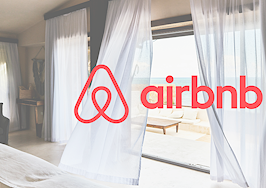By making minor adjustments to federal policy, an entirely new generation of children can enhance their chance to achieve better health and greater economic mobility.
David Piscatelli is a strategy expert at Avenue One, a prop-tech service platform that streamlines institutional capital’s access to SFR. Connect with him on LinkedIn.
The Housing Choice Voucher program, established in the 1970s to provide a subsidy for low-income households to pay for private rental housing, is falling woefully short of its goal. In fact, only one in four people who qualify for the program receive support.
Meanwhile, we’ve seen a proliferation of institutional investment in Single Family Real Estate properties in recent years. These newer owners not only have a natural alignment with the voucher program, but with relatively minor tweaks, could help provide thousands of additional families with quality, affordable housing and a pathway out of poverty.
First, let’s take a quick glance back. The Housing Choice Voucher program was designed to provide more than four walls and a roof; its stated goal was to lift families, particularly those with children, out of poverty by giving them opportunities to live in neighborhoods with access to higher-quality schools and better-quality of life.
But one major underlying problem, apart from a shortage of affordable housing, has undermined progress, and that is a scarcity of property owners willing to participate in the program.
Many private landlords are reluctant to accept vouchers because of bureaucracy, red tape and uncertainty. Further complicating the issue, potential tenants have only 90 days to find a qualifying unit before vouchers expire.
Data shows that 30 percent of voucher recipients are unable to find housing within the required 90 days, and about half of all voucher holders end up living in concentrated areas of poverty, which negates the program’s intended purpose.
Single-family can supplement affordable housing
While the Housing Choice Voucher program has been struggling, institutional investment in single-family real estate has been growing. In fact, many SFR companies, though they comprise a smaller slice of the overall SFR market, have a much more natural incentive to adapt the voucher program compared to smaller property managers and owners given their larger portfolios.
Currently, however, institutional investors in single-family real estate are unable to qualify for Government Sponsored Enterprise (GSE) financing when renting to voucher holders.
By making this pool of investors eligible for more favorable financing — the same financing already available to smaller property managers and owners — policymakers could unlock larger swaths of real estate in typically higher-opportunity neighborhoods.
This would create more opportunities for vouchers to be used and for families to find quality housing. Just as important, it would put thousands of families every year in a better position to break the difficult cycle of poverty by giving them access to neighborhoods with greater educational development and health benefits and demonstrating links that improve long-term outcomes and mobility in our society. This idea has been championed by the Urban Institute and others.
The underrepresentation of voucher holders living in single-family homes is reflective of a larger systemic issue. Apart from the question of fair market valuations, most single-family landlords are individuals and families who may not find it worth their effort to familiarize themselves with the Housing Choice Voucher program.
Similarly, many smaller landlords would be disproportionally affected by lost revenue associated with keeping their unit(s) vacant during the Department of Housing and Urban Development’s inspection and qualification process as compared to midsize or larger landlords and property managers.
Given this paradigm, there is a good case to be made that leveraging institutional purchases of single-family real estate properties could be an important strategy to helping address the nation’s affordable housing crisis.
Cutting bureaucracy and streamlining inspections
In addition to opening the voucher program up to new investors, there are other obvious improvements that could help drive change and lift more people out of poverty.
Landlords often cite the time and unpredictability involved in the Federal government’s cumbersome inspection process as an impediment to opting into the program.
In addition to taking weeks or sometimes months for landlords to schedule an inspection of a vacant unit before a family can move in, Housing and Urban Developments guidelines are often interpreted differently by local housing authorities. The result for landlords would be lost revenue while units sit idle.
By allocating more resources to speed up the inspection process, as well as laying out clear and consistent uniform guidelines that landlords can address before an inspection takes place, more landlords would be willing to opt into the Housing Choice Voucher program.
Another impediment is that units must pass a “rent reasonableness” test after the inspection that compares a unit’s fair market value with the government-approved Fair Market Rent.
Many homes, especially single-family units, fail this test and become ineligible for voucher use unless the landlord willingly lowers the asking rent. This issue is borne out of an implicit bias in the Federal government’s formula, which accounts for the number of bedrooms (zero to four) without differentiating by structure type.
In essence, a larger two-bedroom single-family home is treated the same as a smaller two-bedroom unit in a multifamily building.
It is not surprising that more single-family property owners are unwilling to go through the entire inspection process when they know they will not be receiving fair market rent. The result is a disproportionate number of voucher users concentrated in multifamily buildings, which are often segregated in certain pockets of a city.
Tweaking the values of Housing Choice Vouchers by structural type and more broadly by zip code can greatly expand the pool of qualified units and provide more opportunities for renters.
This is in fact what played out when the Federal government granted local housing authorities in the Greater Boston Area permission to value rental vouchers by zip code instead of using the Federal government’s standard one-size-fits-all formula.
As a result of this commonsense tweak, more qualified families have been able to take advantage of more available vouchers, and more low-income families have been able to move out of the city’s concentrated areas of poverty.
Charting a path forward
The long-term effects of being born and raised in a high-poverty neighborhood are an inescapable reality for far too many. Single-family rental properties are typically located in neighborhoods outside of high-density poverty areas and could provide a meaningful leg up for thousands of additional qualified voucher families every year.

























